#LangChain for developers
Explore tagged Tumblr posts
Text
Data Science in 2025: The Shocking Tools That Will Make or Break Your Career
The data science field in 2025 is no longer what it used to be. With AI-native tooling, vector search pipelines, and local-first compute on the rise, a seismic shift is underway. 📉 40% of traditional data science tasks are now automated 📈 Roles demand real-time, AI-integrated, and app-ready solutions ❗ And if you’re still clinging to legacy tools like Pandas and Jupyter? You’re not just…
#best AI tools for data scientists#data science tools 2025#LangChain for developers#LLM integration tools#modern data science stack
0 notes
Text

LangChain development refers to the process of building intelligent applications by chaining large language models (LLMs) like ChatGPT with external tools, APIs, databases, and memory modules. It enables developers to create context-aware, dynamic, and agent-driven AI systems that can perform real-time reasoning, interact with various data sources, and automate complex tasks.
0 notes
Text
Top 10 Benefits of Using Langchain Development for AI Projects
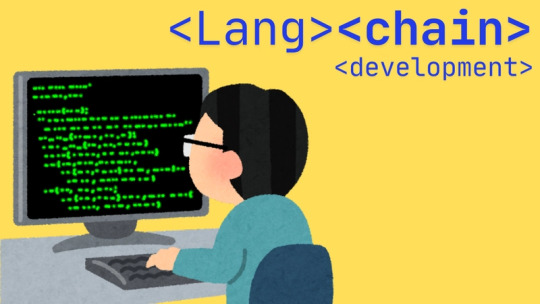
In the rapidly evolving world of artificial intelligence, developers and businesses are constantly seeking frameworks that can streamline the integration of Large Language Models (LLMs) into real-world applications. Among the many emerging solutions, Langchain development stands out as a game-changer. It offers a modular, scalable, and intelligent approach to building AI systems that are not only efficient but also contextually aware.
0 notes
Link
Sure! Here's a concise summary: This article explores using LangChain, Python, and Heroku to build and deploy Large Language Model (LLM)-based applications. We go into the basics of LangChain for crafting AI-driven tools and Heroku for effortless cloud deployment, illustrating the process with a practical example of a fitness trainer application. By combining these technologies, developers can easily create, test, and deploy LLM applications, streamlining the development process and reducing infrastructure headaches.
0 notes
Text
AI Frameworks Help Data Scientists For GenAI Survival

AI Frameworks: Crucial to the Success of GenAI
Develop Your AI Capabilities Now
You play a crucial part in the quickly growing field of generative artificial intelligence (GenAI) as a data scientist. Your proficiency in data analysis, modeling, and interpretation is still essential, even though platforms like Hugging Face and LangChain are at the forefront of AI research.
Although GenAI systems are capable of producing remarkable outcomes, they still mostly depend on clear, organized data and perceptive interpretation areas in which data scientists are highly skilled. You can direct GenAI models to produce more precise, useful predictions by applying your in-depth knowledge of data and statistical techniques. In order to ensure that GenAI systems are based on strong, data-driven foundations and can realize their full potential, your job as a data scientist is crucial. Here’s how to take the lead:
Data Quality Is Crucial
The effectiveness of even the most sophisticated GenAI models depends on the quality of the data they use. By guaranteeing that the data is relevant, AI tools like Pandas and Modin enable you to clean, preprocess, and manipulate large datasets.
Analysis and Interpretation of Exploratory Data
It is essential to comprehend the features and trends of the data before creating the models. Data and model outputs are visualized via a variety of data science frameworks, like Matplotlib and Seaborn, which aid developers in comprehending the data, selecting features, and interpreting the models.
Model Optimization and Evaluation
A variety of algorithms for model construction are offered by AI frameworks like scikit-learn, PyTorch, and TensorFlow. To improve models and their performance, they provide a range of techniques for cross-validation, hyperparameter optimization, and performance evaluation.
Model Deployment and Integration
Tools such as ONNX Runtime and MLflow help with cross-platform deployment and experimentation tracking. By guaranteeing that the models continue to function successfully in production, this helps the developers oversee their projects from start to finish.
Intel’s Optimized AI Frameworks and Tools
The technologies that developers are already familiar with in data analytics, machine learning, and deep learning (such as Modin, NumPy, scikit-learn, and PyTorch) can be used. For the many phases of the AI process, such as data preparation, model training, inference, and deployment, Intel has optimized the current AI tools and AI frameworks, which are based on a single, open, multiarchitecture, multivendor software platform called oneAPI programming model.
Data Engineering and Model Development:
To speed up end-to-end data science pipelines on Intel architecture, use Intel’s AI Tools, which include Python tools and frameworks like Modin, Intel Optimization for TensorFlow Optimizations, PyTorch Optimizations, IntelExtension for Scikit-learn, and XGBoost.
Optimization and Deployment
For CPU or GPU deployment, Intel Neural Compressor speeds up deep learning inference and minimizes model size. Models are optimized and deployed across several hardware platforms including Intel CPUs using the OpenVINO toolbox.
You may improve the performance of your Intel hardware platforms with the aid of these AI tools.
Library of Resources
Discover collection of excellent, professionally created, and thoughtfully selected resources that are centered on the core data science competencies that developers need. Exploring machine and deep learning AI frameworks.
What you will discover:
Use Modin to expedite the extract, transform, and load (ETL) process for enormous DataFrames and analyze massive datasets.
To improve speed on Intel hardware, use Intel’s optimized AI frameworks (such as Intel Optimization for XGBoost, Intel Extension for Scikit-learn, Intel Optimization for PyTorch, and Intel Optimization for TensorFlow).
Use Intel-optimized software on the most recent Intel platforms to implement and deploy AI workloads on Intel Tiber AI Cloud.
How to Begin
Frameworks for Data Engineering and Machine Learning
Step 1: View the Modin, Intel Extension for Scikit-learn, and Intel Optimization for XGBoost videos and read the introductory papers.
Modin: To achieve a quicker turnaround time overall, the video explains when to utilize Modin and how to apply Modin and Pandas judiciously. A quick start guide for Modin is also available for more in-depth information.
Scikit-learn Intel Extension: This tutorial gives you an overview of the extension, walks you through the code step-by-step, and explains how utilizing it might improve performance. A movie on accelerating silhouette machine learning techniques, PCA, and K-means clustering is also available.
Intel Optimization for XGBoost: This straightforward tutorial explains Intel Optimization for XGBoost and how to use Intel optimizations to enhance training and inference performance.
Step 2: Use Intel Tiber AI Cloud to create and develop machine learning workloads.
On Intel Tiber AI Cloud, this tutorial runs machine learning workloads with Modin, scikit-learn, and XGBoost.
Step 3: Use Modin and scikit-learn to create an end-to-end machine learning process using census data.
Run an end-to-end machine learning task using 1970–2010 US census data with this code sample. The code sample uses the Intel Extension for Scikit-learn module to analyze exploratory data using ridge regression and the Intel Distribution of Modin.
Deep Learning Frameworks
Step 4: Begin by watching the videos and reading the introduction papers for Intel’s PyTorch and TensorFlow optimizations.
Intel PyTorch Optimizations: Read the article to learn how to use the Intel Extension for PyTorch to accelerate your workloads for inference and training. Additionally, a brief video demonstrates how to use the addon to run PyTorch inference on an Intel Data Center GPU Flex Series.
Intel’s TensorFlow Optimizations: The article and video provide an overview of the Intel Extension for TensorFlow and demonstrate how to utilize it to accelerate your AI tasks.
Step 5: Use TensorFlow and PyTorch for AI on the Intel Tiber AI Cloud.
In this article, it show how to use PyTorch and TensorFlow on Intel Tiber AI Cloud to create and execute complicated AI workloads.
Step 6: Speed up LSTM text creation with Intel Extension for TensorFlow.
The Intel Extension for TensorFlow can speed up LSTM model training for text production.
Step 7: Use PyTorch and DialoGPT to create an interactive chat-generation model.
Discover how to use Hugging Face’s pretrained DialoGPT model to create an interactive chat model and how to use the Intel Extension for PyTorch to dynamically quantize the model.
Read more on Govindhtech.com
#AI#AIFrameworks#DataScientists#GenAI#PyTorch#GenAISurvival#TensorFlow#CPU#GPU#IntelTiberAICloud#News#Technews#Technology#Technologynews#Technologytrends#govindhtech
2 notes
·
View notes
Text
LangChain - An Overview | Python GUI
LangChain is an open-source framework designed to simplify the development of language model-powered applications. It provides tools to build, manage, and integrate language models into workflows, allowing for seamless interaction with external data, APIs, and databases. Ideal for building chatbots, virtual assistants, and advanced NLP applications, LangChain enables developers to create intelligent, dynamic, and scalable solutions. For more information, visit PythonGUI.

1 note
·
View note
Text
A Practical Guide to LLM Development for Modern Enterprises

AI has moved from science fiction into strategy. At the forefront of this transformation are Large Language Models (LLMs)—powerful systems trained to understand and generate human language. These models are changing how companies build software, automate workflows, and deliver value to customers.
But the power of LLMs lies not in simply using them—but in adapting them. Off-the-shelf models like GPT-4 or Claude are impressive, but generic. To drive real business impact, companies need solutions that understand their language, their customers, and their goals.
That’s where a specialized LLM development company becomes essential.
In this guide, we break down what LLM development really involves, the steps to implement it successfully, and how a professional LLM development company can accelerate your AI transformation.
What Is LLM Development?
LLM development is the process of customizing, deploying, and integrating large language models to solve business problems. It goes far beyond calling an API or embedding a chatbot. It includes:
Choosing the right model (open-source or proprietary)
Customizing it with company-specific data
Building workflows that interact with users, tools, and systems
Ensuring privacy, security, and compliance
Deploying the solution in real-world environments (cloud, hybrid, or on-prem)
This requires a blend of skills: AI research, software engineering, UX design, domain knowledge, and regulatory awareness. Few internal teams can do this alone—which is why companies partner with expert LLM development companies.
Step-by-Step: How to Build LLM-Powered Solutions
Here’s a clear breakdown of the typical process used by experienced LLM development firms:
1. Identify Use Cases and Business Goals
Before any code is written, you need to identify where LLMs can create value. Common use cases include:
Automating customer support
Summarizing internal documents
Extracting data from unstructured text
Generating reports or emails
Powering internal knowledge assistants
The best LLM development companies help you prioritize based on ROI, feasibility, and technical complexity.
2. Model Selection and Strategy
Next, select a foundational model. Options include:
Proprietary models (e.g., GPT-4, Claude 3): high performance, but costly and API-dependent
Open-source models (e.g., Mistral, LLaMA 3): flexible, lower cost, deployable on your own servers
An LLM development company helps you weigh trade-offs in:
Performance vs. latency
Cost vs. control
Cloud vs. on-prem deployment
Security and compliance
3. Fine-Tuning or RAG Setup
To make a model understand your business, two approaches are common:
a. Fine-tuning
Train the model on your documents, chat logs, or emails to adapt its language and tone.
b. Retrieval-Augmented Generation (RAG)
Connect the model to an external database or document store. It retrieves relevant content in real-time, then generates responses grounded in that data.
LLM development companies often specialize in building custom RAG pipelines using tools like:
LangChain
LlamaIndex
ChromaDB or Weaviate
4. Prompt Engineering and Guardrails
Custom prompt design helps guide the model to behave predictably and safely. This includes:
Instruction formatting
Context window optimization
Hallucination reduction
Sensitive content filtering
A good development team also adds guardrails—automated checks to catch bias, toxicity, or inaccuracy before outputs are shown to users.
5. Workflow and Tool Integration
LLMs are most useful when embedded into your daily operations. A development company can integrate your AI systems with:
CRMs like Salesforce or HubSpot
Internal knowledge bases or SharePoint
Communication platforms like Slack or Teams
External tools and APIs
This turns a static LLM into a workflow-aware copilot.
6. User Interface Design
LLMs are often accessed via:
Web apps
Chat interfaces
Mobile tools
Embedded assistants inside existing platforms
UX matters. A skilled LLM development company ensures that users can interact naturally—and trust the results.
7. Monitoring, Feedback, and Continuous Improvement
LLMs are not “set and forget.” You’ll need:
Usage metrics
Error reporting
Feedback loops (thumbs up/down, corrections)
Retraining and iteration
Your development partner should offer tools and support to keep your system improving over time.
Key Benefits of Working with an LLM Development Company
Let’s explore why working with a dedicated LLM partner can be a game-changer for your business:
Expertise in AI Infrastructure
They bring battle-tested architectures for model serving, vector search, memory systems, and real-time interactions.
Reduced Time to Market
Instead of experimenting for months, you get working prototypes in weeks—guided by best practices.
Customization at Scale
From your brand voice to regulatory constraints, everything can be tailored to your exact business needs.
Security and Compliance
Enterprise LLM developers understand how to implement SOC 2, HIPAA, GDPR, and more.
Future-Proofing
They stay ahead of the curve—helping you adopt newer models, agent frameworks, or multimodal tools when the time is right.
Real-World Examples: LLM Development in Action
Here’s how companies are using custom LLMs right now—with help from development partners:
Healthcare
AI assistants that generate patient summaries from EHR data
Tools that help doctors navigate clinical guidelines
HIPAA-compliant chatbots for patient inquiries
Finance
Compliance copilots that flag risky language in reports
AI analysts that synthesize investment memos
Smart assistants for accounting and auditing
Legal
Tools that extract clauses from contracts
AI that compares agreements against company policy
Document review bots that highlight risks
Enterprise Ops
Internal copilots for HR and IT
Smart ticket routers and response generators
Assistants that explain company policies in plain language
What to Look for in an LLM Development Company
Choosing the right partner is critical. Here are the signs of a reliable LLM development firm:
Proven Track Record
They’ve built and deployed LLM systems in your industry or similar ones.
Model-Agnostic Expertise
They work with multiple models—GPT-4, Claude, Mistral, LLaMA—and can help you choose wisely.
Strong Security Practices
They handle data responsibly, with clear audit trails and access controls.
Full-Stack Skills
From data pipelines to UI/UX, they can take your project end-to-end.
Ongoing Support
They don’t disappear after deployment. Look for teams that offer retraining, feedback collection, and iterative improvement.
The Future of LLMs in the Enterprise
LLMs today are impressive—but what’s next? A top LLM development company can help you prepare for:
Long-Term Memory
Persistent memory systems that let the model "remember" users and improve over time.
Multi-Agent Workflows
LLMs that collaborate with one another—like a researcher, planner, and writer working together.
Multimodal Interfaces
Models that can process not just text, but also images, videos, and charts.
Local and Edge Deployment
With smaller, faster models like Mistral or Phi-3, LLMs will run on phones, laptops, and IoT devices.
Final Thoughts
LLMs are reshaping how businesses operate—helping companies communicate better, work smarter, and serve customers faster. But true value comes not from using AI off-the-shelf, but from building it around your business.
That’s why a skilled LLM development company isn’t just a service provider—it’s a partner in your digital evolution. From ideation to deployment to ongoing optimization, they help you go from buzzwords to breakthroughs.
If your business is ready to scale intelligence across teams, tools, and tasks, then now is the time to invest in custom LLM development.
0 notes
Text
Unleashing Innovation: LangChain and Microsoft Collaborate for AI Advancements
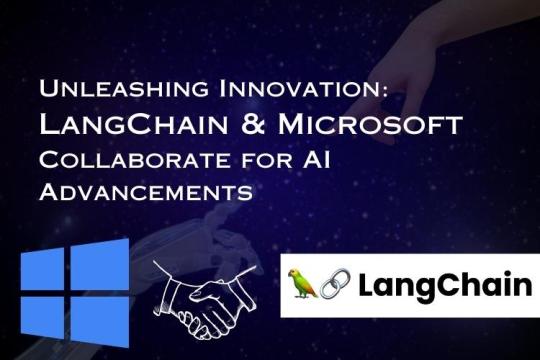
Exciting news! LangChain and Microsoft have teamed up, signaling a game-changing partnership in the AI landscape. Their collaboration integrates LangChain's context-aware reasoning with Microsoft's cutting-edge technology, marking a milestone in AI evolution.
0 notes
Text
How to Choose the Right Artificial Intelligence Course in Dubai for Your Career Goals?
Artificial Intelligence isn’t just trending it’s rewriting the rules across every industry. Dubai, with its aggressive tech ambitions and government-backed AI strategies, is positioning itself as one of the most promising AI hubs in the Middle East. Whether you’re looking to upskill, pivot careers, or build something of your own, now’s the time to get serious about AI.
But here’s the thing: with so many courses out there, choosing the right Artificial Intelligence course in Dubai isn’t about picking the flashiest marketing page or the lowest price. It’s about aligning the course with your career goals — and that’s what this guide is here to help you do.
Step 1: Define Why You’re Getting Into AI
Before you even look at a syllabus, you need to get clear on your intent.
Ask yourself:
Am I trying to become a Machine Learning or AI Engineer?
Do I want to apply AI in my domain (finance, healthcare, logistics, etc.)?
Am I switching careers or building on an existing tech background?
Do I want to eventually work in research or academia?
Is this about building a business with AI-powered tools?
Your “why” determines what kind of course you need — from technical bootcamps to application-focused programs or theory-heavy academic routes.
Step 2: Match Your Career Path to Course Type
Let’s break this down by career goal.
1. AI/ML Engineer
You need a code-intensive, math-focused course that includes:
Python, NumPy, pandas, scikit-learn
Machine learning models: regression, classification, clustering
Deep learning (CNNs, RNNs, transformers)
Deployment using Flask, Docker, cloud (AWS, Azure)
End-to-end projects and portfolio development
Best for: Engineers, developers, or computer science grads looking to specialize.
2. Data Scientist or Analyst
Look for a course that combines:
Python and data handling
Data visualization (Matplotlib, Seaborn, Power BI)
Exploratory Data Analysis (EDA)
Statistics + ML models
Business storytelling with AI
Best for: Analysts, Excel power users, or professionals aiming to turn data into decisions.
3. Domain Professionals (Finance, Healthcare, etc.)
You’re not trying to become a developer — you want to use AI to make better business decisions.
Look for:
Applied AI training
Tools like AutoML, no-code ML platforms
Case studies from your industry
Focus on ethics, explainability, and real-world constraints
Best for: Mid-career professionals or managers wanting to make their work AI-ready.
4. Academic/Research-Oriented
You’ll want a course that leans into:
Core mathematics: linear algebra, probability, calculus
Algorithm theory and derivations
Advanced neural networks, generative models, reinforcement learning
Research paper reading and writing
Mentorship from faculty or researchers
Best for: Master’s students, PhD aspirants, or those entering AI research.
5. Entrepreneurs & Product Leaders
You want to understand AI deeply enough to build products or lead teams. You need:
Overview of AI technologies
How to scope and build AI-powered apps
MVP development using LLMs, NLP, APIs
AI product strategy, ethical risks, and business models
Best for: Startup founders, tech PMs, or innovation heads.
Step 3: Evaluate the Curriculum (Don’t Settle for Buzzwords)
Avoid vague promises like “learn AI in 4 weeks” or “certified by global experts.” Instead, look at what’s actually taught.
A quality Artificial Intelligence course in Dubai should include:
Foundations: Python, statistics, linear algebra
Machine Learning: supervised & unsupervised learning
Deep Learning: CNNs, RNNs, transformers, LLMs
NLP: text classification, language models, chatbots
Computer Vision: image recognition, object detection
Deployment: Flask, Streamlit, Docker, cloud hosting
Capstone Projects: working on real-world datasets
Bonus if it includes:
Prompt engineering
Tools like OpenAI APIs, Hugging Face, or LangChain
Hands-on implementation of current-gen AI tools
If all you're doing is watching slides and running someone else’s code, you’re not learning — you're consuming.
Step 4: Choose the Right Format — Online, Offline, or Hybrid
Dubai offers all formats. What matters is what fits your lifestyle and learning needs.
❖ Offline (In-person classroom):
High accountability
Great for structured learning
Peer and instructor support
Ideal for beginners or career changers
❖ Online (Live or self-paced):
Flexible for working professionals
Works well if you’re disciplined
Live classes are better than pure self-paced
❖ Hybrid:
Attend some sessions offline, rest online
Great option if you're working or traveling often
If you're based in Dubai, classroom-based courses give you better networking, mentor access, and practical labs.
Step 5: Ask About Hands-On Projects
No employer cares about what you “watched.” They care about what you built.
Look for:
Projects after each module (not just one final project)
Case studies that mimic real business problems
Exposure to open datasets (Kaggle, UCI, government data)
Portfolio help: GitHub, LinkedIn profile, personal blog or demo
At least one capstone project should be end-to-end: data collection, preprocessing, modeling, evaluation, and deployment.
Why Boston Institute of Analytics Is Worth Considering in Dubai?
If you’re looking for a top-rated Artificial Intelligence course in Dubai, the Boston Institute of Analytics (BIA) is one of the most reliable choices.
What BIA brings to the table:
Globally recognized AI certification
In-person and hybrid learning options in Dubai
Industry-level curriculum built for real-world roles
Projects, capstone labs, and deployment training
Mentorship from experienced AI professionals
Placement support for job-ready learners
Whether you’re starting fresh, switching careers, or advancing into leadership, BIA helps you build real skills, not just stack up credentials.
Final Thoughts
Choosing the right Artificial Intelligence course in Dubai is not about who has the flashiest brochure. It’s about finding a course that:
✅ Matches your career path ✅ Offers deep, applied learning — not just concepts ✅ Has instructors who’ve done the work, not just taught it ✅ Includes real-world projects and portfolio support ✅ Helps you grow — whether that means landing a job, building a product, or applying AI in your own field
Dubai’s AI landscape is only getting bigger. The right course doesn’t just prepare you for today’s roles — it gives you the tools to lead tomorrow’s innovations.
#Best Data Science Courses in Dubai#Artificial Intelligence Course in Dubai#Data Scientist Course in Dubai#Machine Learning Course in Dubai
0 notes
Text
7 Steps to Start Your Langchain Development Coding Journey
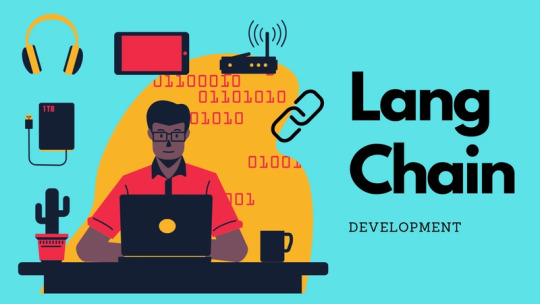
In the fast-paced world of AI and machine learning, Langchain Development has emerged as a groundbreaking approach for building intelligent, context-aware applications. Whether you’re an AI enthusiast, a developer stepping into the world of LLMs (Large Language Models), or a business looking to enhance user experiences through automation, Langchain provides a powerful toolkit. This blog explores the seven essential steps to begin your Langchain Development journey from understanding the basics to deploying your first AI-powered application.
0 notes
Text
Mastering Autonomous AI Agents: Real-World Strategies, Frameworks, and Best Practices for Scalable Deployment
Introduction
The rapid evolution of artificial intelligence is ushering in a new era where autonomous AI agents are transforming business operations and software engineering. From automating complex workflows to enhancing customer experiences, these agents are redefining how organizations innovate and compete. As enterprises increasingly adopt agentic and generative AI, understanding the latest frameworks, deployment strategies, and software engineering best practices is essential for success. For professionals seeking to deepen their expertise, enrolling in an Agentic AI course in Mumbai or exploring Generative AI courses online in Mumbai can provide cutting-edge knowledge and practical skills. Choosing the best Agentic AI course with placement ensures career advancement in this fast-growing field. This article provides a comprehensive guide for AI practitioners, software engineers, architects, and technology leaders seeking to scale autonomous AI agents in real-world environments. We explore the evolution of Agentic and Generative AI, highlight the most impactful frameworks and tools, and offer actionable insights for ensuring reliability, security, and compliance. Through real-world case studies and practical examples, we demonstrate how to navigate the challenges of deploying autonomous AI agents at scale.
The Evolution of Agentic and Generative AI in Software
Agentic AI refers to autonomous systems capable of planning, acting, and learning, often building on the capabilities of large language models (LLMs) to perform human-like tasks. This decade is marked by significant advancements in agentic architectures, with multi-agent systems enabling complex collaboration and automation across industries. Many professionals interested in mastering these technologies find value in an Agentic AI course in Mumbai, which covers these emerging trends comprehensively. Generative AI, on the other hand, focuses on creating new content, be it text, images, or code, using sophisticated neural networks. The integration of agentic and generative technologies is driving innovation in software engineering, automating repetitive tasks, improving decision-making, and personalizing user experiences. Those seeking flexible learning options often pursue Generative AI courses online in Mumbai to stay current with the latest tools and techniques.
Recent Developments
Multi-Agent Systems: These systems leverage multiple specialized agents working together to achieve complex objectives. For example, in supply chain management, multi-agent systems optimize logistics, predict disruptions, and coordinate responses in real time. Understanding multi-agent collaboration is a key component of many best Agentic AI courses with placement options.
Generative AI Applications: Generative models automate code generation, create synthetic data for machine learning, and personalize customer interactions. Tools like GitHub Copilot and Amazon Q Developer Agent exemplify how generative AI is revolutionizing software development and support.
Shift to Agentic AI: The industry is moving from generative to agentic AI, emphasizing autonomous decision-making and workflow automation. This shift is reflected in the growing adoption of frameworks like LangGraph, AutoGen, and LangChain, which enable developers to build and orchestrate intelligent agents at scale.
Frameworks, Tools, and Deployment Strategies
To scale autonomous AI agents effectively, organizations must select the right frameworks and tools, align them with business objectives, and integrate them into existing workflows. Professionals often complement their theoretical knowledge by enrolling in an Agentic AI course in Mumbai or Generative AI courses online in Mumbai to gain hands-on experience with these frameworks.
LLM Orchestration and Integration
Large Language Models (LLMs) are the backbone of many AI agents, providing natural language understanding and generation capabilities. Orchestration platforms such as LangChain and Dify enable seamless integration of LLMs into business processes, supporting use cases like customer service automation and data analysis.
Autonomous Agents in Practice
Autonomous agents are increasingly deployed in customer service, software development, and cybersecurity. For example, Amazon’s Q Developer Agent autonomously writes, tests, and submits code, significantly reducing development time and errors. In customer service, AI agents powered by platforms like IBM Watson Assistant or Google Dialogflow handle millions of queries, providing instant support and reducing operational costs. Learning how to implement such solutions is a highlight of many best Agentic AI courses with placement programs.
MLOps for Generative Models
MLOps (Machine Learning Operations) is critical for managing the lifecycle of generative models. It encompasses model development, deployment, monitoring, and maintenance, ensuring consistent performance and reliability. Tools like Kubeflow and MLflow streamline these processes, enabling organizations to scale their AI initiatives effectively.
Advanced Tactics for Scalable, Reliable AI Systems
Scaling AI systems requires robust technical infrastructure and disciplined engineering practices, topics well-covered in an Agentic AI course in Mumbai or Generative AI courses online in Mumbai to prepare practitioners for real-world challenges.
Multi-Agent Ecosystems and Interoperability
Implementing multi-agent ecosystems allows organizations to break down silos and enable specialized agents to collaborate across complex workflows. This approach requires investment in interoperability standards and orchestration platforms to manage multiple autonomous systems efficiently. The ability to design interoperable systems is a core skill taught in the best Agentic AI course with placement options.
Industry-Specific Specialization
As AI matures, there is growing demand for industry-specific solutions tailored to unique business challenges and regulatory requirements. For example, healthcare organizations require AI agents compliant with HIPAA, while financial institutions need solutions adhering to GDPR and CCPA. Courses focusing on Agentic AI often include modules on customizing solutions for various sectors, making an Agentic AI course in Mumbai a valuable choice for professionals targeting these industries.
Technical Infrastructure for Agentic AI
Core Technology Stack: LLMs, vector databases, and API integration layers form the foundation of agentic AI systems.
Scalability Considerations: Microservices architecture, load balancing, and fault tolerance are essential for handling increasing workloads and ensuring system reliability.
Security Frameworks: Comprehensive security measures, including data encryption, access controls, and monitoring, protect agent operations and sensitive data.
Governance, Risk Management, and Ethical Considerations
With AI agents taking on critical business functions, robust governance frameworks are essential to prevent misuse and ensure accountability. These topics are integral to many best Agentic AI course with placement curricula, preparing learners for ethical AI deployment.
Governance and Risk Management
Gartner predicts that by 2028, 25% of enterprise breaches will be traced back to AI agent misuse. Organizations must implement sophisticated risk management strategies, including regular audits, anomaly detection, and incident response plans.
ethics and Compliance
Ensuring AI systems comply with regulatory requirements and ethical standards is vital. This includes implementing data privacy measures, avoiding bias in decision-making, and maintaining transparency. Human oversight frameworks are critical for maintaining trust and accountability as AI agents become more autonomous.
Software Engineering Best Practices
Software engineering best practices are the cornerstone of reliable, secure, and compliant AI systems. These practices are emphasized in Agentic AI course in Mumbai and Generative AI courses online in Mumbai, helping professionals ensure high-quality deployments.
MLOps and DevOps Integration
Integrating MLOps and DevOps practices streamlines model development, deployment, and monitoring. Version control, CI/CD pipelines, and automated testing ensure consistent performance and rapid iteration.
Testing and Validation
Rigorous testing and validation are essential for ensuring AI systems operate as intended. This includes unit testing, integration testing, and simulation-based validation to identify and address issues before deployment.
Change Management and User Training
Successful AI adoption requires comprehensive user training and change management. Organizations must educate teams on agent capabilities and limitations, fostering a culture of continuous learning and adaptation. These principles are core components in the best Agentic AI course with placement programs.
Cross-Functional Collaboration for AI Success
Cross-functional collaboration is essential for aligning AI solutions with business needs and ensuring technical excellence. This collaborative approach is highlighted in many Agentic AI course in Mumbai and Generative AI courses online in Mumbai offerings.
Data Scientists and Engineers
Close collaboration between data scientists and software engineers ensures that AI models are both accurate and scalable. Data scientists focus on model development, while engineers handle deployment, integration, and performance optimization.
Business Stakeholders
Involving business stakeholders throughout the AI development process ensures that solutions address real-world challenges and deliver measurable value. Regular feedback loops and iterative development drive continuous improvement.
Measuring Success: Analytics and Monitoring
Measuring the impact of AI deployments requires robust analytics and monitoring frameworks, a topic covered extensively in advanced AI courses.
Real-Time Insights and Continuous Monitoring
Implementing real-time analytics tools provides immediate visibility into system performance, enabling swift adjustments and proactive issue resolution. Continuous monitoring ensures timely detection of data drift, model degradation, and security threats.
Key Performance Indicators (KPIs)
Tracking KPIs such as model accuracy, decision-making outcomes, and business impact is essential for evaluating success and guiding future investments.
Case Study: Klarna’s LangChain-Powered Assistant
Klarna, a leading fintech company, successfully deployed an AI-powered customer service assistant using LangChain. This assistant handles queries from over 85 million users, resolving issues 80% faster than traditional methods.
Technical Challenges
Integration Complexity: Integrating the AI assistant with existing systems required careful planning to ensure seamless data exchange and minimal disruption to customer service operations.
Data Privacy: Ensuring compliance with stringent data privacy regulations was a significant challenge, requiring robust data protection measures and ongoing monitoring.
Business Outcomes
Efficiency Gains: The AI assistant significantly reduced response times, improving customer satisfaction and reducing the workload on human agents.
Scalability: The system’s ability to handle a large volume of queries made it an essential tool for scaling Klarna’s customer support capabilities.
Actionable Tips and Lessons Learned
Develop a Clear AI Strategy
Define Ethical Principles: Establish a clear set of values and principles to guide AI development and deployment.
Align with Business Objectives: Ensure that AI initiatives are closely aligned with organizational goals to maximize return on investment. Professionals preparing for this often choose an Agentic AI course in Mumbai for strategic insights.
Invest in Multi-Agent Systems and Interoperability
Explore Multi-Agent Architectures: Leverage specialized agents to automate complex workflows and improve decision-making.
Focus on Interoperability: Invest in standards and platforms that enable seamless collaboration between agents and existing systems.
Emphasize Software Engineering Best Practices
Implement Rigorous Testing: Use simulation environments and iterative testing to validate system performance and identify issues early.
Adopt MLOps and DevOps: Streamline model development, deployment, and monitoring to ensure reliability and scalability.
Foster Cross-Functional Collaboration
Bring Together Diverse Expertise: Encourage collaboration between data scientists, engineers, and business stakeholders to align AI solutions with real-world needs.
Support Continuous Learning: Provide ongoing training and support to help teams adapt to new technologies and workflows. Several best Agentic AI course with placement programs emphasize this.
Prioritize Governance, Ethics, and Compliance
Implement Robust Governance Frameworks: Establish clear policies and procedures for AI oversight, risk management, and incident response.
Ensure Regulatory Compliance: Stay abreast of evolving regulations and implement measures to protect data privacy and prevent bias.
Conclusion
Scaling autonomous AI agents is a complex but rewarding endeavor that requires a combination of technical expertise, strategic planning, and cross-functional collaboration. By leveraging the latest frameworks, tools, and best practices, organizations can unlock significant value from AI, transforming their operations and customer experiences. As the industry continues to evolve, those who embrace agentic and generative AI, while maintaining a strong focus on ethics, compliance, and engineering excellence, will be best positioned to thrive in the new era of AI-driven transformation. For professionals aiming to advance their careers in this domain, enrolling in an Agentic AI course in Mumbai, exploring Generative AI courses online in Mumbai, or selecting the best Agentic AI course with placement provides a solid foundation and practical advantage.
0 notes
Text
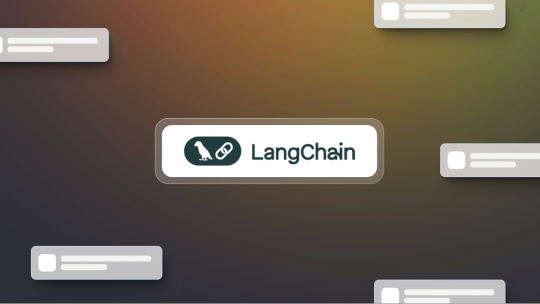
LangChain Development Company This image represents the cutting-edge capabilities of a LangChain development company—experts in building powerful, LLM-driven applications that connect language models with tools, data sources, and APIs. LangChain enables intelligent agents, RAG pipelines, and dynamic workflows tailored for enterprise use. Ideal for businesses seeking custom AI solutions that think, reason, and act.
#LangChain#LangChainDevelopment#AIAgents#LLMApps#RAGArchitecture#AIIntegration#AIDevelopmentCompany#ConversationalAI
0 notes
Text
What Is LangChain Development? A Beginner’s Guide
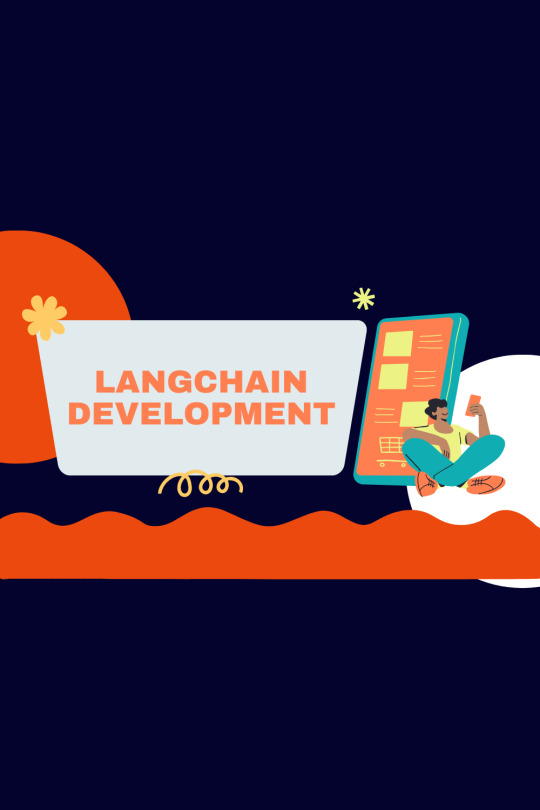
LangChain development focuses on building applications powered by large language models (LLMs) that can reason, plan, and interact with tools and data sources. It provides a framework to create intelligent agents capable of chaining LLM calls, accessing APIs, databases, and executing complex tasks. Ideal for developers building smart assistants, RAG (retrieval-augmented generation) systems, or agentic workflows, LangChain enables dynamic, real-world AI applications.
0 notes